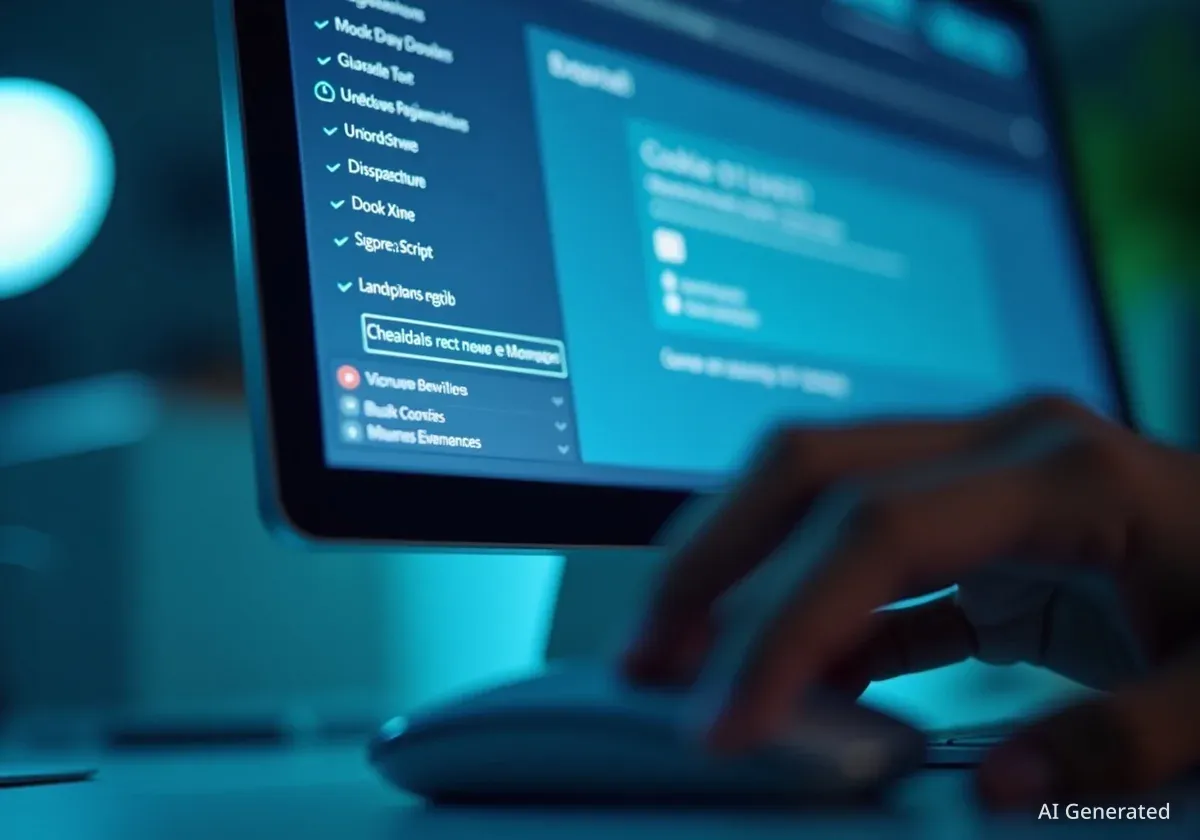Users attempting to access specific online platforms, such as blog.youtube, may encounter a 'This site can't be reached' message. This error indicates that the web browser was unable to establish a connection with the server. Often, the underlying cause is an unexpected closure of the connection by the server itself, rather than a problem with the user's internet service.
Understanding these connection issues is important for effective troubleshooting. The error message 'ERR_CONNECTION_CLOSED' specifically points to the server terminating the communication. This can happen for various reasons, ranging from network configuration problems on the user's end to server-side issues or even firewall restrictions.
Key Takeaways
- 'ERR_CONNECTION_CLOSED' means the server ended the connection.
- Common causes include internet connection issues, firewall settings, or proxy configurations.
- Checking physical cables and rebooting network devices can often resolve the problem.
- Firewall or antivirus software might block access to certain websites.
- Incorrect proxy server settings can prevent a direct connection.
Understanding Connection Closure
When a web browser tries to load a page, it sends a request to the website's server. The server then responds by sending the website's data back to the browser. An 'ERR_CONNECTION_CLOSED' message appears when this communication process is interrupted. Specifically, the server initiated the termination of the connection before the data transfer was complete, or even before it properly began.
This type of error differs from other common connection failures. For example, a 'DNS_PROBE_FINISHED_NXDOMAIN' error indicates that the domain name could not be resolved. In contrast, 'ERR_CONNECTION_CLOSED' means the browser found the server, but the server then cut off the interaction.
"Unexpected connection closures are frustrating but often solvable. The key is to systematically check potential points of failure, starting with the most basic network components," explains Alaina Vance, a technology policy correspondent.
Initial Troubleshooting Steps
The first step in resolving a 'This site can't be reached' error is to ensure a stable internet connection. Physical connections are a common point of failure. Users should check all cables connecting their computer to the modem and router. Loose or damaged cables can disrupt network signals, leading to intermittent or failed connections.
Fact Check
- Approximately 30% of internet connection issues are resolved by simply rebooting the router or modem.
- A stable wired connection generally offers higher reliability than Wi-Fi for critical tasks.
Rebooting network hardware is also a critical step. Modems, routers, and other network devices can sometimes experience temporary glitches that affect their performance. Turning these devices off for 30 seconds and then back on can clear these issues, allowing them to re-establish a fresh connection with the internet service provider.
Firewall and Antivirus Impact
Security software, such as firewalls and antivirus programs, plays an important role in protecting a computer from online threats. However, these tools can sometimes be overly aggressive, mistakenly blocking legitimate website connections. When a program like a browser attempts to access a website, the firewall evaluates the connection. If it deems the connection suspicious, it may block it, resulting in an 'ERR_CONNECTION_CLOSED' message.
Users should check their firewall or antivirus settings. It is possible that the browser or the specific website (e.g., blog.youtube) is listed as a blocked application or an unsafe domain. If this is the case, allowing the browser to access the network or adding the website to an 'allowed' list can resolve the problem.
Background Information
Firewalls act as a barrier between a user's computer and the internet. They monitor incoming and outgoing network traffic, deciding whether to allow or block specific data packets based on a set of security rules. Antivirus software, on the other hand, focuses on detecting and removing malicious software.
If the website or browser is already listed as allowed, removing it from the list and adding it again can sometimes reset the permissions, fixing any corrupted settings. This ensures that the security software re-evaluates the connection request under its current rules.
Proxy Server Configurations
Proxy servers act as intermediaries between a user's browser and the internet. They can be used for various purposes, including enhancing security, filtering content, or accessing geo-restricted content. However, incorrect proxy settings can prevent a direct connection to websites, leading to errors like 'ERR_CONNECTION_CLOSED'.
Many browsers offer specific settings to manage proxy configurations. Users encountering this error should navigate to their browser's advanced settings. Within these settings, there is typically an option to change proxy settings. It is important to ensure that the configuration is set to 'no proxy' or 'direct connection' unless a proxy server is intentionally being used.
- Accessing Proxy Settings:
- Open the browser's main menu.
- Go to 'Settings'.
- Select 'Show advanced settings'.
- Find 'Change proxy settings'.
- Verify or adjust the proxy configuration.
If a proxy server is being used, verifying its address and port settings is crucial. An outdated or incorrect proxy configuration will prevent the browser from reaching the intended website. Disabling the proxy temporarily can help determine if it is the root cause of the connection issue.
Server-Side Issues and Broader Implications
While many connection errors can be resolved on the user's end, it is also possible that the problem lies with the website's server. An 'unexpectedly closed the connection' message can sometimes indicate that the server itself experienced an issue, such as a temporary overload, maintenance, or a software malfunction. In such cases, there is little a user can do beyond waiting for the website administrators to resolve the problem.
According to cybersecurity experts, server-side issues can range from denial-of-service attacks to routine updates that temporarily take a server offline. These events are usually short-lived. Users might consider trying to access the website again after a few minutes or hours.
Monitoring official announcements from the website or checking status pages, if available, can provide information about ongoing outages or maintenance. For popular platforms like YouTube, widespread connection issues are often quickly acknowledged and addressed by their technical teams.





